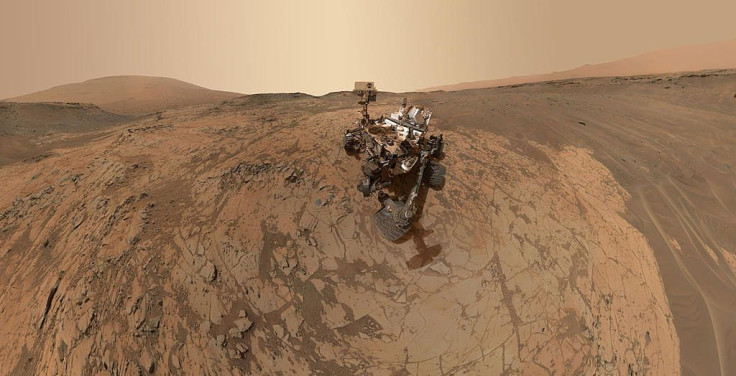NASA's Curiosity Captures Incredible 360-Degree View Of Mars' Vera Rubin Ridge [WATCH]

NASA has unveiled an incredible 360-degree video of Mars' "Rock Hall" taken by the Curiosity Rover before it began its exploration of the "Glen Torridon."
Created from a panorama captured by the lander on Dec. 19, the 360-degree view of Mars' rocky terrain showed the Vera Rubin Ridge, an erosion-resistant band on the north slope of lower Mount Sharp inside Gale Crater that NASA's Curiosity spent over a year exploring.
Specifically, the video showed what scientists dubbed Mars’ Rock Hall, the rover's final drill site on the ridge. The panorama also includes the floor of Gale Crater, where Mount Sharp can be found. Since 2014, Curiosity has been climbing and gathering information about Mount Sharp, the mysterious formation of which was recently unlocked by scientists.
Also shown in the video is what the Curiosity mission team previously called the "clay-bearing unit," now named Glen Torridon.
While the Curiosity rover has left Vera Rubin Ridge and moved on to another area on the Mars surface, the mission team is still trying to figure out its history. None of the data gathered from it so far has explained why the ridge hasn't eroded like the bedrock surrounding it. But the Curiosity's exploration did yield the discovery that the rocks of the ridge were the result of sediment that settled in an ancient lake.
Curiosity science team member Abigail Fraeman of NASA's Jet Propulsion Laboratory in Pasadena, California explained that they encountered many "surprises" since the rover began its exploration.
"We're leaving with a different perspective of the ridge than what we had before," she said in an article posted on NASA's website.
Prior to the Curiosity, a NASA orbiter had observed the same ridge and found evidence that an iron-rich mineral called hematite that often forms in water is present in the area. Curiosity confirmed that there is indeed hematite, as well as crystals, which is another sign that water previously filled the area, according to the NASA Jet Propulsion Laboratory website.
As for Curiosity's new destination, the newly dubbed Glen Torridon can be found in a trough between Vera Rubin Ridge and the rest of the mountain. It was previously called the clay-bearing unit because the rocks in the area had been found to contain phyllosilicates. These are clay minerals that form in water and could help scientists learn more about the ancient water that could be found in Gale Crater off and on during its early years.
The Glen Torridon may also have been a habitable area on ancient Mars that could have supported life, that is if scientists find evidence that both water and organic material were present when the rocks formed.
"In addition to indicating a previously wet environment, clay minerals are known to trap and preserve organic molecules," said Curiosity Project Scientist Ashwin Vasavada of JPL. "That makes this area especially promising, and the team is already surveying the area for its next drill site."
© Copyright IBTimes 2024. All rights reserved.





















